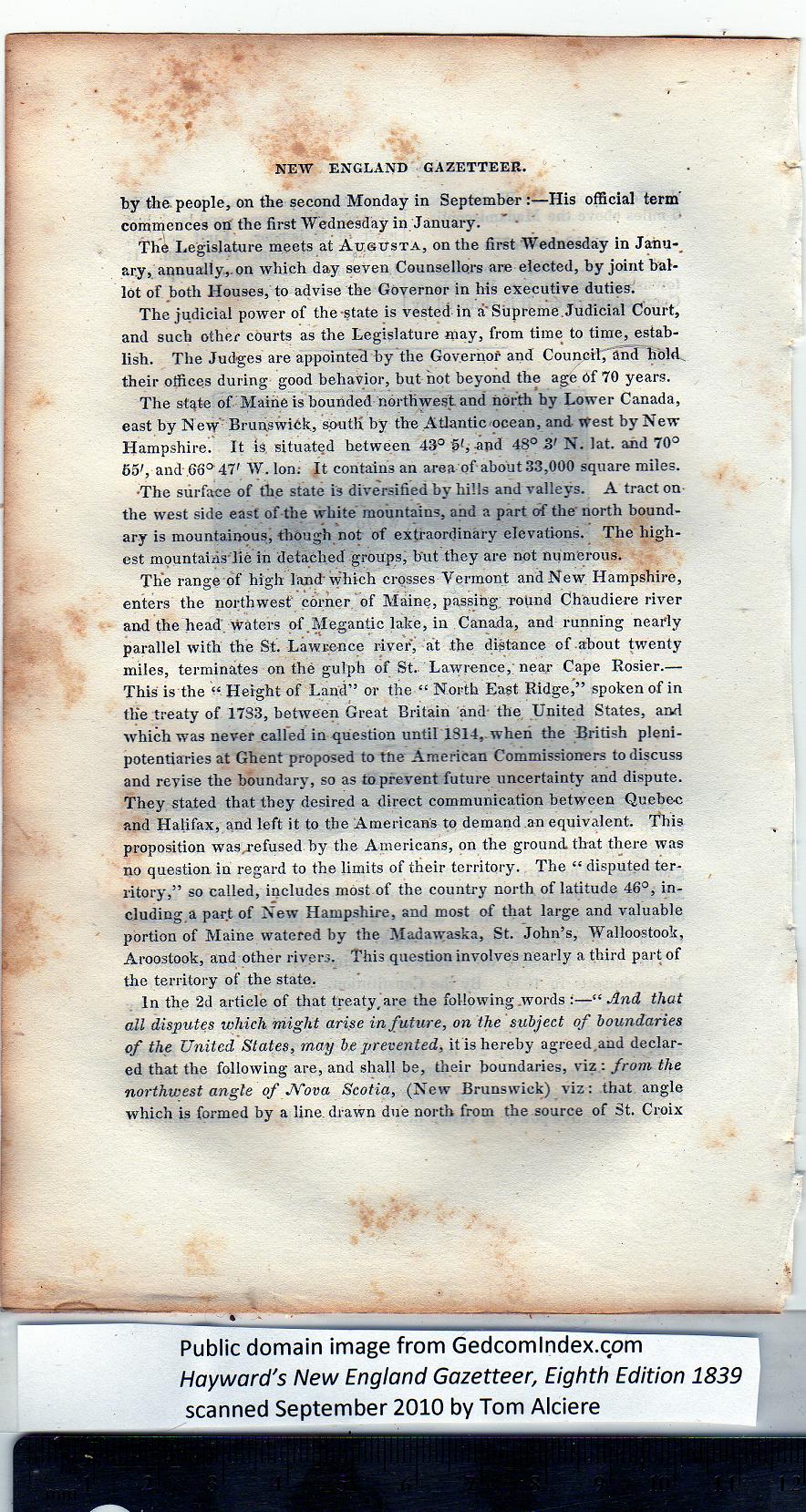|
NEW ENGLAND GAZETTEER.
by the. people, on the second Monday in September :—His official term
commences on the first Wednesday in January.
The Legislature meets at Augusta, on the first Wednesday in Janu-
ar.y, annually,.on which day seven Counsellors are elected, by joint bal-
lot of both Houses, to advise the Governor in his executive duties.
The judicial power of the state is vested in a* Supreme. Judicial Court,
and such other courts as the Legislature may, from time to time, estab-
lish. The Judges are appointed by the Governor and Council, and hold
their offices during good behavior, but hot beyond the age Of 70 years.
The st^te of Maine is bounded northwest and north by Lower Canada,
east by New Brunswick, south by the Atlantic ocean, and west by New
Hampshire. It is situated between 43° 5',-and 48° 3' N. lat. and 70°
65', and.06°'47' W. Ion: It contains an area of about 33,000 square miles.
•The surface of the state is diversified by hills and valleys. A tract on
the west side east of the white mountains, and a part of the' north bound-
ary is mountainous, though not of extraordinary elevations. The high-
est mountains lie in detached groups, but they are not numerous.
The range of high land'which crosses Vermont and New Hampshire,
enters the northwest' corner of Maine, passing round Chaudiere river
and the head', waters of_Megantic lake, in Canada, and running nearly
parallel with the St. Lawrence river, at the distance of about twenty
miles, terminates on the gulph of St. Lawrence, near Cape Rosier.—
This is the “ Height of Land” or the “ North East Ridge,” spoken of in
the treaty of 1733, between Great Britain and the United States, and
which was never called in question until 1814, when the British pleni-
potentiaries at Ghent proposed to the American Commissioners to discuss
and revise the boundary, so as to prevent future uncertainty and dispute.
They stated that they desired a direct communication between Quebec
and Halifax, and left it to the Americans to demand an equivalent. "This
proposition was ^refused by tbe Americans, on the ground that there was
no question in regard to the limits of their territory. The “ disputed ter-
ritory,” so called, includes most of the country north of latitude 46°, in-
cluding a part of New Hampshire, and most of that large and valuable
portion of Maine watered by the Madawaska, St. John’s, Walloostook,
Aroostook, and other rivers. This question involves nearly a third part of
the territory of the state.
In the 2d article of that treaty, are the following .words :—“ And that
all disputes which might arise in future, on the subject of boundaries
of the United States, may be prevented, it is hereby agreed,and declar-
ed that the following are, and shall be, their boundaries, viz : from the
northwest angle of JSTova Scotia, (New Brunswick) viz: that angle
which is formed by a line, drawn due north from the source of St. Croix
PREVIOUS PAGE ... NEXT PAGE
This page was written in HTML using a program written in Python 3.2 and image-to-HTML text generated by ABBYY FineReader 11, Professional Edition.
|
